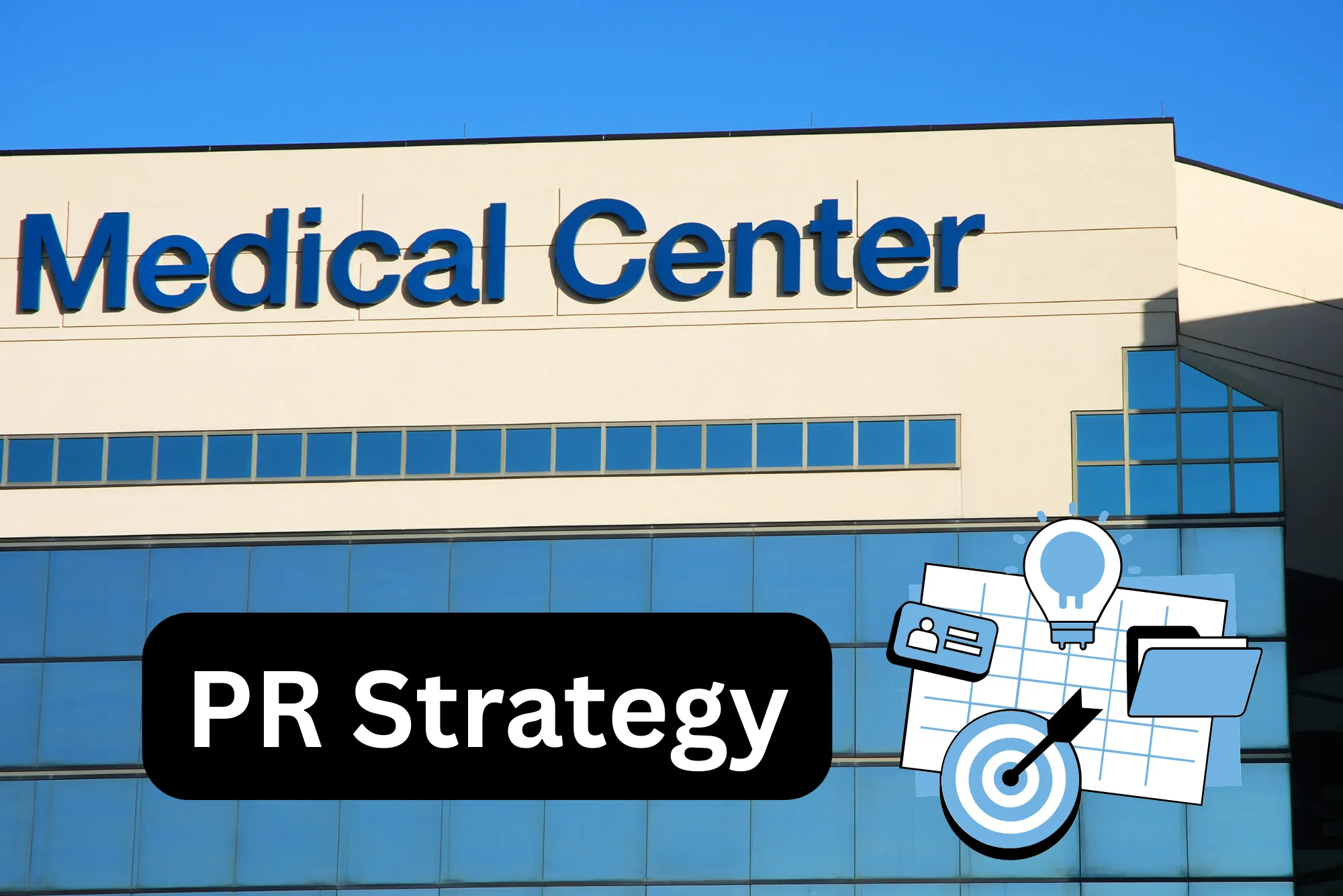PR in healthcare isn’t about glossy visuals or slogans like “We’re the best!” That no longer works—patients today are more informed and cautious. If your clinic wants more than just to make noise and instead attract actual patients, it’s time to dig deeper.
Valeria Mingova, Founder of Virtual PR manager PRonto and CEO of PR Doctor, offers a step-by-step guide to building patient trust through strategic communications. No fluff, no wasted ad budgets—just proven tactics with real-life examples.
Step 1. Audience Analysis: Who You Speak To and What You Say
Start with the basics. There is no “universal patient.” If you don’t understand your audience, your message is just noise—and a waste of money. You can’t appeal to everyone, which is why audience segmentation is essential.
In private clinics, the majority of patients are women: 41% are aged 22–35, and 30% are 36–50. But these are just averages. Each clinic must refine this data: How many are mothers bringing in children? How many are coming in for personal health checks? The more precisely you segment your audience, the more effective your communication.
How do you attract those who’ve never been to a private clinic? According to surveys, 60% of private clinic patients chose them due to faster access to specialists without waiting in line. In public clinics, getting an ultrasound or MRI can take months. The same goes for specialized consultations. That’s why your messaging to this “untapped” audience should focus on speed and convenience.
Find your audience where they already are—social media, forums, and word of mouth—and deliver content there.
Medical statistics alone won’t help with segmentation. Hire marketers to divide your audience based on expectations, fears, psychology, and purchasing behavior.
Identifying groups isn’t enough—you need tailored messaging that speaks to their fears, motivations, and desires.
Step 2. Establishing Expertise: Who’s the Face of Your Clinic
Now let’s address who should be communicating with potential patients. People instinctively look for a combination of competence and compassion. The physician is their hero. Without that figure, trust won’t form. Let your doctors be your media ambassadors: share their stories, offer media commentary, run social media accounts and blogs.
Clinic leadership may ask: “Why build a personal brand for a doctor who might leave in six months?” In a competitive market, talent turnover is expected.
Still, building visibility for your medical team and brand reduces the information vacuum. The benefits of having a recognizable doctor outweigh the risks.
Alternatively, promote more stable figures like the founder or chief medical officer. For example, we helped scale an edtech platform for pharmacists by promoting the CEO as an industry expert through business media such. With an average of 12 articles monthly and a reach of 5 million people, the result was significant demand growth, brand recognition, and surpassing their main competitor in media visibility.
Step 3. Reputation Management: Reviews and Feedback
Reviews are gold—if they’re genuine. Even negative feedback is valuable; it uncovers internal process issues that can be fixed.
Patients are quick to share negative reviews—even when the treatment was successful—because fear and high expectations often lead to disappointment. When magic doesn’t happen, ratings drop.
Respond quickly and sincerely to criticism—no generic apologies. Investigate the issue, explain how it was resolved, and if possible, offer compensation. Never ignore negative reviews. Instead, demonstrate that your clinic is continuously improving.
A clinic with only five-star ratings appears suspicious. But if the average score is around 2.0, patients won’t come at all. Aim for a believable balance.
What should you do? Never buy fake reviews—consumers can spot them. Encourage real feedback instead.
However, people are reluctant to leave positive reviews—they are not motivated. How to get sincere positive feedback?
Send an SMS after a visit asking for a review. Patients want to be heard. Show them that feedback matters and will be used in a constructive way: “Your review helps us improve.”
To boost engagement, offer a small incentive—like a discount or free service. Personal requests from doctors also work, but only if the interaction was positive.
For example, one of our pharmaceutical clients simply started thanking customers for feedback. Positive reviews rose by 40% in just one month.
There are pitfalls in managing reviews—consider hiring a specialized agency.
Step 4. Media and Social Media Outreach: Ideas Over Budgets
Journalists are always looking for experts. If you’re not visible, they’ll find someone else. Use platforms like Pressfeed to join expert databases.
Forget basic announcements like “we opened a new branch.” Instead, monitor healthcare news and offer timely expert commentary. It can be tied to events or evergreen topics like “how to avoid seasonal allergies.” Share stories from your practice (with consent), studies, and professional opinions.
Avoid pushy ads. Provide value—guides, myth-busting content, answers to common questions. This builds authority and reduces patients’ fear of treatment.
Support your content with evidence: licenses, real patient stories, academic publications.
What can be considered as useful content? Example: One of our pharma clients began publishing content like “What supplements to take in spring” and “Choosing the right vitamins,” voiced by the CEO. This significantly improved brand recognition and audience loyalty as the consumers started viewing the company as a health and wellness expert.
Where to publish? Choose based on your target segment. A PR specialist should identify the right channels for your audience.
As for social media, simply starting a channel for the clinic or a doctor isn’t enough. Without strategy, effort is wasted. No matter how engaging your content is, it won’t reach people on its own—so it won’t drive appointments either. Social media should be strategic and requires investment—time, money, and a trained person. Most doctors aren’t content creators. Effective SMM involves content planning, copywriting, design, and outreach growth.
Smart social media, supported by professionals, builds visibility and trust for both the clinic and its experts.
In 2025, only coordinated teamwork between PR and SMM specialists can create high-profile medical media. While some famous doctors started blogging solo, today’s media landscape demands far more. Nowadays the odds of spontaneous success without serious investment are slim.
Step 5. Measuring Results: Not “Likes,” But “Leads”
Content marketing is not about looking good—it’s about performing well. Without analytics, you’re wasting your budget.
Start with key metrics:
- Search volume for your clinic’s name
Number of calls with “I read about you in…” (a clear indicator of PR content effectiveness) - Rate of repeat visits
If content isn’t performing, revise your formats and distribution channels. PR is a marathon, not a sprint. Results begin to show in 3–6 months—and then compound over time.
Now that we have discussed the basics, let’s raise the stakes.
Step 6. Strategic Partnerships: Expand Your Reach
Collaborations boost trust. For example, if your gym recommends a clinic, it’s not just advertising—it’s a referral.
Also, explore partnerships with HR departments of large companies offering medical care in employee benefits packages. Tailor your commercial offers to HR expectations.
Step 7. Personalization and Automation: Speak Your Patient’s Language
Automation done right doesn’t remove the human touch.
What do patients want? Quick and convenient appointment booking. Chatbots on WhatsApp help streamline this, ask clarifying questions, and send test results. Don’t skimp on bot content—poorly written bots damage loyalty more than a medical error.
People love to be recognized. Using CRM systems, clinics can remember names and preferences, track visit history, and adjust communications accordingly. A CRM can automatically remind a patient when it’s time for a check-up, suggest relevant services, and record responses to campaigns.
Key automation scenarios:
- SMS, email, and WhatsApp appointment reminders or promotions
- Triggered messages: thank-you notes and review requests a few days post-visit
- Event-based emails: birthday wishes, treatment anniversaries, seasonal health tips (e.g., summer skincare from a dermatologist)
Advanced personalization through CDPs (Customer Data Platforms) or web analytics allows your website to adapt dynamically—offering services based on behavior, like suggesting a fertility consultation to someone researching IVF.
Work with experts to build automation that feels personal, not pushy.
Summary & Action Plan Checklist
To attract more patients, your marketing should focus on trust, value, and personalization. Modern patients don’t want to be sold to—they want answers, empathy, and expertise. Build your strategy on expert-driven content, media visibility, and real engagement.
Checklist:
- Create expert content (articles, videos, condition explainers)
- Run doctor blogs with plain-language posts
- Provide expert commentary in the media
- Showcase real cases and patient testimonials
- Avoid aggressive sales tactics—prioritize education and empathy
- Segment your audience by age, concerns, and needs
- Launch personalized communication (reminders, relevant content)
- Track performance (calls, bookings from each channel)
- Test various content and ad formats
Start small. Even one action—like collecting patient reviews—can make a difference. Choose one and implement it this week.



